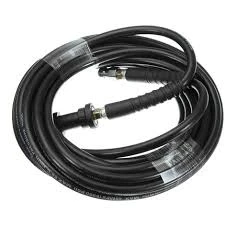Understanding the Differences Between R134 and R134a Refrigerants for Better Usage
Understanding the Differences Between R134 and R134a Refrigerants
When it comes to refrigerants used in automotive air conditioning and various refrigeration systems, one name often mentioned is R134. However, what many may not realize is that there is a difference between R134 and R134a, and it is essential to understand these differences to make informed decisions regarding their use and environmental impact.
Understanding the Differences Between R134 and R134a Refrigerants
The primary difference lies in their chemical composition and environmental impact. R134a does not contain chlorine, which makes it less harmful to the ozone layer compared to its predecessor, R12. This change was motivated by global environmental efforts and the recognition of the detrimental effects of CFCs on the ozone layer. As a result, R134a offers a safer alternative while still being effective in cooling applications.
what is the difference between r134 and r134a

Moreover, R134a has a lower global warming potential (GWP) compared to R12. While R12 has a GWP of approximately 8,000, R134a has a GWP of around 1,430, indicating that it poses a significantly reduced risk concerning climate change. Despite this, R134a is not entirely free from environmental concerns, as conventionally, HFCs like R134a can also contribute to global warming, leading to the industry's ongoing search for more sustainable refrigerant options.
In terms of performance, R134a exhibits excellent thermodynamic properties, making it suitable for use in automotive air conditioning systems and refrigeration applications. However, due to its higher pressure and specific characteristics, R134a systems require components and practices tailored to its properties. Additionally, technicians must be aware of the proper handling and recycling of R134a during maintenance and repair, especially since it is crucial to prevent leaks that would contribute to environmental degradation.
In conclusion, while R134 might be used colloquially to refer to R134a, the distinction is essential for understanding refrigeration technologies. R134a serves as a replacement for R12 and is a more environmentally friendly option due to its lower ozone depletion and global warming potential. However, it is imperative for society to continue seeking out and developing refrigerants with even lower environmental impacts as global warming and ozone depletion remain pressing challenges.
As we move forward, regulations, such as the Kigali Amendment, aim to phase down HFCs like R134a further, leading to the exploration of alternatives such as natural refrigerants (like hydrocarbons and ammonia) and new synthetic options that promise to have minimal environmental effects. Understanding these differences and keeping abreast of regulations and advancements in refrigerant technology is crucial for industries, consumers, and environmentalists alike. By being well-informed, everyone can contribute to a more sustainable future in refrigeration and air conditioning.
-
Ultimate Spiral Protection for Hoses & CablesNewsJun.26,2025
-
The Ultimate Quick-Connect Solutions for Every NeedNewsJun.26,2025
-
SAE J1401 Brake Hose: Reliable Choice for Safe BrakingNewsJun.26,2025
-
Reliable J2064 A/C Hoses for Real-World Cooling NeedsNewsJun.26,2025
-
Heavy-Duty Sewer Jetting Hoses Built to LastNewsJun.26,2025
-
Fix Power Steering Tube Leaks Fast – Durable & Affordable SolutionNewsJun.26,2025

